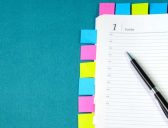Financial Freedom. The ultimate goal for many of us. But what does it really mean, and how do you get here? Those are the questions that a lot of us get stuck on.
Financial Freedom might seem more like a dream than anything else to many people. And the goal here is to shift that dream into a reality. There are actionable steps that anyone can take to get closer and closer to financial freedom. And the bonus is, even if you don’t fully achieve it, you will be in a better financial position than when you started. So what do you have to lose?
The technical definition of financial freedom is that you have enough money in savings, investments, and passive income that you don’t have to work a traditional job. Many people use financial freedom synonymously with financial independence, but there’s a subset of people who consider financial independence having a job and taking care of yourself without parental or spousal support. Although both definitions are valid, some like to use financial freedom to describe living job free to avoid any confusion.
I have a slightly different definition of financial freedom, one that makes it easier for anyone to obtain. It’s not about sacrificing everything you enjoy so that you never have to work again. It’s about choosing the lifestyle you want and having the time to pursue your passions – even if you get paid for them.
What are the Steps to Financial Freedom?
Some famous finance so-called gurus will tell you that there is an easy path to financial freedom for everyone. If you just follow their seven-step plan, or 10 step plan, or 12 step plan, then you too will achieve freedom.
The problem with these plans is that they aren’t realistic. Every single person has a different starting point and different end goals; different circumstances and different obstacles. Although these plans are good starting points and can help give you some great ideas, they don’t work for everyone and don’t allow for a lot of variations. Some folks end up feeling like failures because they can’t seem to escape debt, and others have so many bills that they can’t save anything extra. Obtaining financial freedom isn’t a one-size-fits-all plan.
How Do You Get Financial Freedom?
The fact that there isn’t a one-size-fits-all path to financial freedom doesn’t make it harder to get there. In fact, I think it makes it easier. There are numerous things you can do to achieve financial freedom, and you can easily tweak any plan to make it work for you. But there are a few things you need to figure out before you make your plan.
Life Goals
The most important thing that you need to determine is what your own personal goals are. Do you want to live in a quaint cabin off the grid somewhere? Travel the world in an RV? Live in a major city and enjoy the nightlife? Have a humble abode in the suburbs where the kids can visit and you can watch the grandkids play?
There are so many paths in life, and whichever you chose will have implications on your financial goals and your quest for financial freedom. This is the biggest limitation to the step-plans that we discussed above. Those plans assume that everyone wants to follow the traditional life script – go to college, get married, buy a house, have kids, work a job you hate, retire. The truth is, most of us actually don’t want to follow that script, but it’s been sold to us as the only path. Figuring out what you really want out of life is the first step to plotting out your own path to financial freedom.
Financial Goals
Once you’ve figured out your life goals, it’s time to map out your financial goals. What do you need to do financially to achieve your life goals?
Your financial goals will vary wildly based on your life goals. If your main goal is to build generational wealth for your children, you may want to focus on funding a 529 college savings plan and buying a home. However, if your life goal revolves around traveling in the world in an RV, your financial goals are going to be focused on financing or purchasing and RV, and paying for that lifestyle.
If you need some help getting started – snag our free Financial Freedom Mind Map. It’s a four-page printable mind map/worksheet that will help you visualize the life you want, and start taking steps towards achieving it.
The Building Blocks of Financial Freedom
One thing that the personal finance gurus get right is that the building blocks are similar, and can be used by everyone. Whether you are saving for a house or an RV, you still need to be saving money, right? Whether you are investing for a child’s college fund or for your own retirement, you still need to be investing. Getting your finances in order is the first step to achieving your financial goals regardless of what those goals are.
There are five main building blocks of financial freedom – they are creating a financial plan, building a budget, saving, investing, and paying off debt. Let’s take a look at each of them.
1. Financial Plan
After you figure out what your life goals and financial goals are, your next step is to make a plan to achieve them. You will need to write out your current status and your goals, then determine some actionable steps that you can take to achieve your goals. Our Financial Freedom Mind Map Worksheet can help you with this!
2. Building a Budget
The financial plan is an important building block and will help get you into the correct headspace. But the first actionable step that you need to take is building a budget. I know budgeting isn’t exciting or glamorous, and it can be downright boring. But it needs to be done. You need to start taking control of your money and telling it where to go. The basic premise of a budget is to control your money rather than let your money control you.
3. Saving
Now that you are in control of your spending, it’s time to start saving some money. Hopefully, you’ve identified places in your budget where you are spending too much money and can cut back. There are numerous ways to save money, from saving on living expenses to saving at the grocery store. You can use an app like trim to find even more savings.
You can use the money that you saved for a variety of things. You can add more money into your emergency fund, or you can use it to start working on the other two building blocks of financial freedom.
4. Investing
Although saving money is great and you should definitely be funding your short term wants and needs via a savings account, it’s not enough for long term goals. This is because the interest on savings accounts has been at “historical lows” for as long as I’ve been able to have my own account. Long gone are the days of earning 5% interest on savings, and to be honest I’m not sure they are ever coming back.
Because of this, the best way to beat inflation and ensure that you are financially prepared for any eventuality is to invest. I prefer investing in low-cost index funds because they offer automatic diversification and they don’t take too much of your hard invested money away in fees.
However, there are numerous other ways to invest. You can purchase individual stocks, real estate, commodities, and you can even invest in yourself by starting a side hustle or building a business. It’s best to diversify your investment portfolio to include a mix of different types of assets.
5. Paying off Debt
The last building block is paying off debt. Debt really is like a ball and chain that you carry around with you. It holds you back from pursuing new opportunities because you constantly have to focus on paying what you owe.
You should focus on paying off the highest interest rate debt, such as credit card debt, first if you can. Put the cards away and promise yourself that you won’t use them unless there is an emergency and you have to. Next, focus on the student loan debt, which is a huge burden to an entire generation. Apply for loan forgiveness if you can, and pay as much as you can each month.
Finally, try to avoid getting into more debt. Save up for a new car and drive that beater for a while longer. Work to build good credit before applying for a mortgage, or avoid buying a house altogether if homeownership isn’t one of your big life goals. Homeownership isn’t for everyone, and if you don’t want it, don’t let what society thinks push you into such a huge financial decision.
What Should I Do First?
Experts will tell you that you should do these things in a certain order, but really it’s hard to say what’s most important. One thing that most do agree on is that you should try to get at least a thousand dollars in an emergency account first. Some experts will tell you that you should work on paying off debt next, but I disagree. If you are thirty or forty thousand dollars in debt, it could take you years to pay that off. Those are years where you will be missing out on compound interest and investment gains.
Therefore, I think you should do all three. Yep, all three are important and you should do all of them at the same time. Let’s say you have a hundred extra dollars at the end of each month after making minimum payments on all of your debts and investing in your retirement account. You should split that hundred dollars up between savings, paying off debt, and non-retirement investment accounts. Since you already have that thousand dollars in your emergency savings account, you can put the smallest amount in there.
Sometimes I put as little as ten bucks a month in my emergency savings – but that’s okay. A little growth is still growth and will help prevent you from getting into even more debt should an emergency arise. The remaining ninety dollars should be split between investments and paying off debt, depending on your financial goals. If your goal is to improve your credit score so you can buy a house, you should focus more on paying off the debt. If your goal is to quit your job as soon as possible and live off investment income, you should focus more on building up your non-retirement investment accounts.
How do I get to Financial Freedom in Five Years?
Some people can achieve financial freedom in five years, and some people can’t. Whether you can or not depends upon your individual situation and your goals.
My definition of financial freedom is slightly different than the traditional definition in that I consider working for myself and building an online empire doing the things that I love to do as a form of financial freedom. While it’s true that I’ll still be technically working, I’ll be working on things I love to work on won’t have to report to a boss or meet anyone’s deadlines but my own. Passion Fire is my Financial Freedom.
If you are in the same boat, I think it’s easy to achieve financial freedom in five years. If you start building your passions into a profitable business today. The harsh reality is that it takes time to make any venture profitable – whether you want to be a content creator or an artist, an Esty seller or anything else, if you start working towards that dream now, five years should be more than enough time to make it a reality.
However, if your goal for financial independence is a Fat Fire lifestyle of living in a high cost of living area and enjoying the nightlife every night, it’s probably going to take you longer. The timeline is very fluid depending on your personal goals.
How Much Money Do I Need for Financial Freedom?
The big question is, how much money do you actually need? And like anything, that depends on your goals. Many people will throw out a number, like a million dollars, and say they will retire once they have that.
But do you really need that much? Only you can answer that. Take a hard look at your goals and what you need to get there, and come up with something that works for you. Check out this post on how much money you really need to get started.
Financial Freedom is Achievable
There is so much to the financial independence movement that some type of FIRE is available to most people. Follow the steps in your financial plan, and you will get there in no time!
The post These common-sense strategies can help you gain financial freedom appeared first on Mediafeed.org
Original source: Mediafeed.org






